You could say they left me feeling sour and cost me loads of dough. Until recently, my attempts at making sourdough bread have been fairly disastrous. Look:
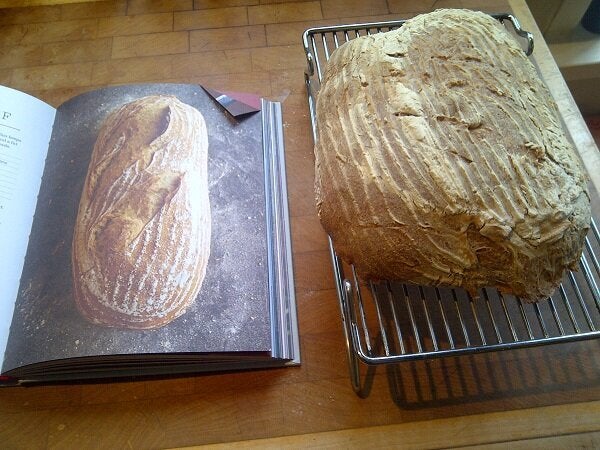
I might just as well have chucked kilos of flour straight in the bin and saved myself a lot of heartache. And bellyache.
My first loaves were so leaden I could have put them in a cannon and fired them, preferably at the people who seem to make a living by putting conflicting advice out there on the arcane art of sourdough bread making.

It's a confusing world, Planet Sourdough. There seem to be as many recipes as there are bakers - and I don't just mean flavour variations but radically different ways of making the stuff.
If you are a successful sourdough baker, move right along. Otherwise, try not to do as I did.
I began with a starter which was much too sloppy, which meant my dough ended up too sticky and hard to work. And impossible to turn out of a proving basket. Flop.
I put loaves in the fridge to prove overnight - apparently a bad idea as a domestic fridge is too cold. Flop.
Leaving them overnight to prove was another no-no. The yeasts ate all of the available sugars in the mix and then ran out of food, meaning the loaves rose - and fell. No coming back from there. Flop.
Nope - not gravy
I had some success last year but got discouraged when I left my sister in law in charge of the kitchen while we were on holiday and she chucked out my starter thinking it was rancid gravy.
Understandable - it had separated into two gruesome-looking layers and didn't smell too good. According to my new sourdough guru, that's the dreaded "hooch". Flop.
It is salvageable but (I now know) it's a situation best avoided by feeding your starter culture regularly.

Ah yes, starter cultures. Otherwise known as Mothers. No bad language please, this is a family site.
Let me give you One Big Piece of Advice if you're a sourdough novice. Get thee to a bakery and do a breadmaking course, or get an experienced friend to show you the ropes.
Books and websites are all very well but there's no substitute for seeing exactly what consistency a starter should be and watching an expert going through the various stages involved in sourdough bread making.
It's not rocket science - but it is microbiology
You don't need a degree to make a sourdough loaf but it helps to have a basic understanding of how the little mothers work.
Basically a wild yeast and some friendly bacteria get together and work as a team, known as a pair, gobbling up the sugars in the flour you feed them and creating that special sourdough taste. If you want the real science stuff, you can find more details on numerous websites.
Anyway, it gets complicated because there's no general agreement on the water-to-flour ratio when you're first making your starter. Some bakers like them runny, others stiff enough to use as wallpaper paste.
This is where I'm bringing my new guru back into the conversation. Chris Brennan is a self-taught artisan baker who, with his daughter, runs the award-winning Pump Street Bakery in Orford in Suffolk.
I attended a talk he gave at our annual county food-fest and he kindly agreed to let me visit his bakehouse for a closer look at how he works his magic.
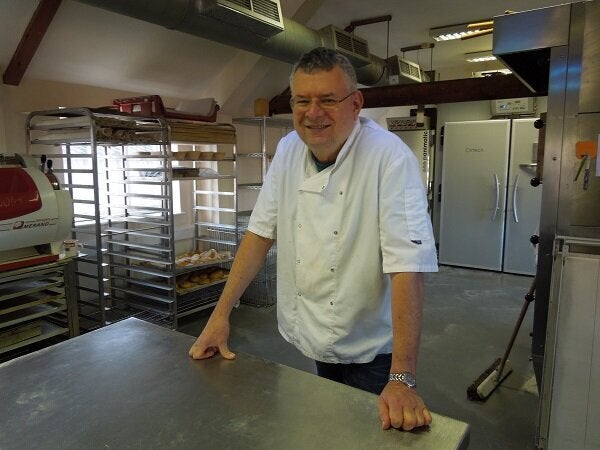
Chris, who's from Jamaica via Canada, worked for IBM for 30 years before retiring to Suffolk.
Despairing of the quality of British bread, he began baking his own. Then he took his loaves to the local country market, selling out every Saturday.
Before he knew where he was he'd embarked on a whole new career, opening Pump Street Bakery three years ago.
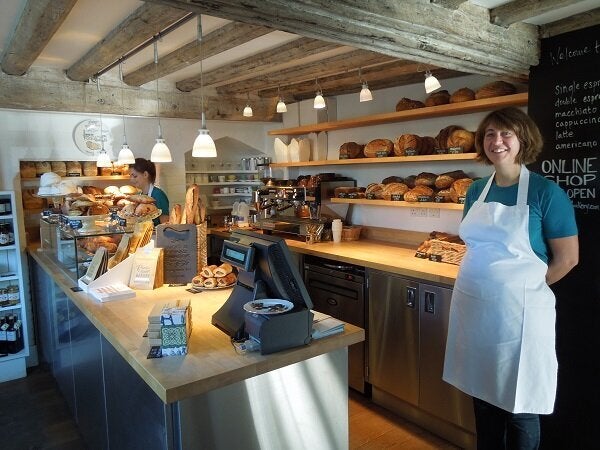
Now he has two shops, 16 full-time staff, he runs bread making courses and he has also embarked on making single estate chocolate. (I can feel a whole new post coming on but we're here to talk about sourdough.)
"It's simple," says Chris.
Hang on, Chris, you're making me feel a bit simple myself after all my abject failures.
"Ah, it's simple, but I didn't say it was easy. There are so many variables that if you don't control the variables the whole process can get out of control."
By that I think he means the type of flour you use (rye or wholemeal have more sugars so give the starter a better feed), precise measurements, the temperature of the water you use to mix the dough (body heat), the temperature it rises at - those sort of things.
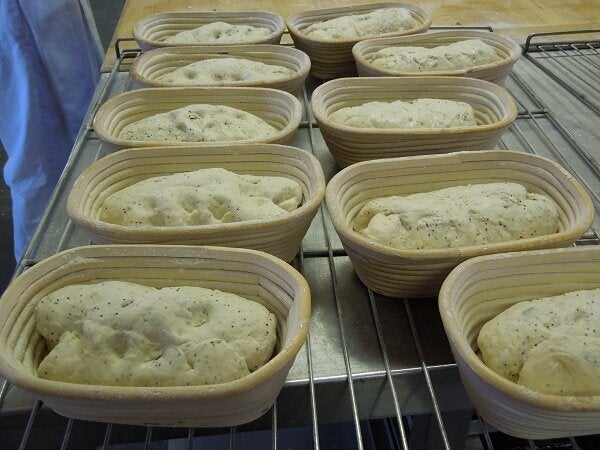
Chris recommends using a starter with 100% hydration - that means the same amount of flour as water, by weight.
You can either beg some starter from your friendly local artisan baker (hands up, you've got me) or make it from scratch (have a look at the websites listed further along).
Look after your starter and it'll look after you
Chris says: "You have to divide sourdough into three things ... one is the starter maintenance.
"So you need to keep your starter in a nice healthy way - nothing to do with baking bread, just maintain this little pool of creatures.
"Once you've done that then the next thing is how to get those happy, healthy creatures into making bread for you ... and what sort of approach do you take to pre-ferment to get really active, healthy and happy creatures into the dough.
"And after that the dough and proofing is easy and straightforward."

Well, he would say that, wouldn't he? By the way, his starter's got a name. He calls it William.
I think he even takes it on holiday with him. It should probably have a pet passport.
For anyone new to sourdough bread making I should perhaps explain that after you've established your starter and before you make your loaf, you make what's called a pre-ferment or a sponge.
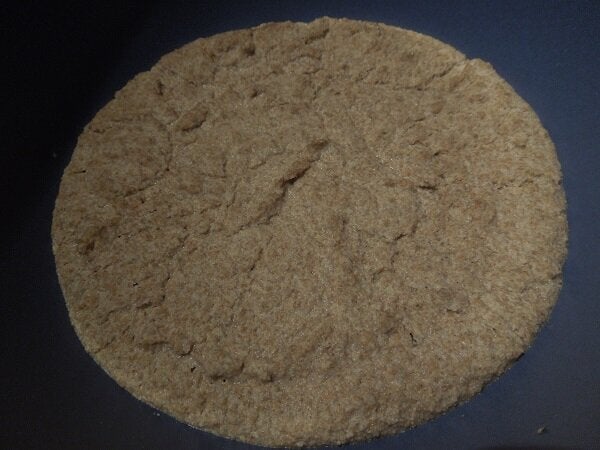
This is some of the starter mixed with a small proportion of flour and water. You leave it to rise for 8-10 hours and use it in your final dough mix in place of bakers' yeast.
Meanwhile you keep back 20g of starter, mix it with 50g each in weight of flour and water, mix it well and put it aside for use in your next batch of bread.
It's okay to keep your starter in the fridge but it's a good idea to take it out and feed it before you want to make your next pre-ferment.
For copyright reasons I can't share Chris's recipes with you here but he recommends the following websites as a mine of useful information, including how to get a starter culture going, how to maintain it and how to make sourdough: Wild Yeast Blog and Weekend Bakery.
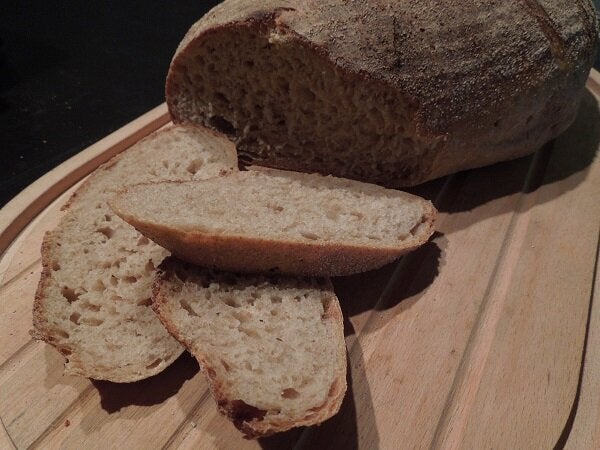
Since I've been following Chris's methods my sourdough has risen to comparatively dizzy heights of success. I road-tested it on my Canadian friend Debra, who virtually lives on the stuff, and got her seal of approval. (No Canadian/seal jokes please. She's an animal lover.)
So, Chris Brennan, artisan baker of this county, I take my hat off to you. You'll make a baker of me yet. Probably.
A version of this post first appeared atMrs Portly's Kitchen.